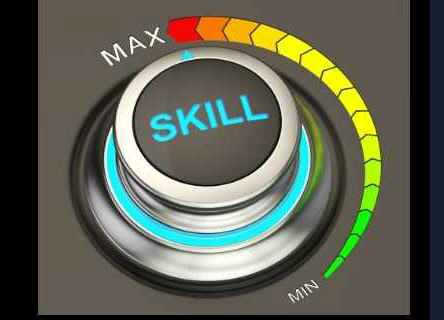You can catch your own kick in rugby, and there are several names for this attacking tactic. There are also different techniques used in different situations in a match.
This article will look in detail at these techniques. And we’ll finish with some awesome video clips of players pulling of this difficult skill.
Catching Your Own Kick Is Allowed In The Rugby Laws

You probably know that players aren’t allowed to pass the ball forward to a teammate.
We’ve written elsewhere about whether rugby players can pass the ball forwards to themselves. In summary, this is not allowed in the laws of rugby.
However, there’s a major difference between throwing the ball forward and kicking it. The laws allow players to kick the ball forward and catch it themselves.
You don’t see it in every match because it’s a difficult skill to pull off.
Two Different Techniques
There are two broadly different techniques used by players in different situations.
Kicking the ball high and long
The technique you’ll see most often is when a player kicks the ball high up into the air and with some distance forward.
Usually, this is the outhalf kicking for a winger and fullback to chase and catch.
But you’ll also see the wingers and fullbacks take the kick themselves and rush forward to catch their own ball.
A short chip kick
This kick is much lower in height. It just needs to clear the height of the opposition players. Because it’s not in the air for very long, it has to be much shorter for the kicker to catch it.
It’s a delicate chip instead of a full punt on the ball. Unlike the higher kick, the tactic doesn’t have several different names. “Chip kick” is widely used.
Different Names For A Long High Kick
I mentioned that the kicker may launch the ball high for a teammate to catch it. Regardless of who catches it, there are several different names used by commentators.
These include:
- Garryowen
- Up And Under
- Bomb
The Garryowen Rugby Football Club in Ireland was known for kicking the ball high and rushing forward in the 1920s. You still hear the term used in Ireland and Britain.
I think the “Bomb” is mostly used in the Southern Hemisphere. I hear Australian and New Zealand commentators using the term.
If a defender is good at catching the high ball, they refer to the player as “defusing the bomb”!
The Up And Under is probably the most self-explanatory term. It refers to kicking the ball high up for players to rush forward to get under it.
Why Is It Rare To See Rugby Players Catching Their Own Kick?
You may see this once or twice in a rugby match. Or a match will go by without any player successfully executing this skill.
It’s not because the players don’t practice for it. This is a skill that is practiced primarily by fullbacks and wingers.
All backs should be able to chase and compete to catch a high ball kicked by a teammate. But combining the two skills is more difficult.
Think about it.
Combined difficulty

The player must steady themselves to punt the ball high and long in a way that ensures it lands within chasing distance.
Once the ball has left the boot, they must chase forward toward to meet the ball where it’s about to land.
Usually, a defending back is positioned to catch the dropping ball. Both players jump to compete and catch it.
It’s actually more difficult for the on-rushing player to time his jump than for a defender who can stand and steady himself until the last second.
Players Catching Their Own Chip Kicks

You’re far less likely to see a chip kick at international level because it’s usually a high-risk maneuver.
The kicker is much closer to defenders who are rushing up in a line. The aim is to chip the ball over their heads to land in undefended space.
I’ve seen players chip right into a delighted defender’s hands.
It’s more likely that they either knock-on or fail to catch the ball before a defender pounces onto it. This is a coach’s nightmare.
So, the safest place to execute a chip kick is probably in the opposition 22. Even if you end up giving the ball away, it’s a long way away from your own try line.
Which Past Or Current Player Is The Best At Catching His Own Kick?
There are several international players who were well known for executing the difficult skill of catching their own long high kicks.
For me, there’s no doubt as to which player is the best I’ve ever seen. Dan Biggar plays flyhalf for Wales, and I’ve never seen another player execute this skill so frequently.
And Biggar does it regularly on the international stage! Here’s a typical example from a Welsh match against South Africa.
Rare Ways That Rugby Players Kick The Ball To Themselves
These actions are so rare that I’ve only seen some of them once on a rugby field.
Backheeling the ball
This was an international match between Ireland and Wales with Ireland on the attack.
A pass went slightly behind winger Simon Zebo. He flicked up his heel and back-heeled the ball into his hands.
It has to be seen to be believed. Here you go.
Chip kicking a ball on the ground
Wingers often find themselves chasing a bouncing bobbling ball down the touchline.
Is it possible to chip kick the ball up into your hands when running at full pelt? I’ve only seen it once. The player was Irish winger Keith Earls in a club match against the Welsh dragons.
Here it is, a moment of genius.
You’ll hear the commentator (Donan Lenihan) refer to Gaelic football skills. Chipping the ball from the ground is a key skill in Gaelic football as players in the mens’ game aren’t allowed to pick up the ball with their hands. But the ball is round, which is a lot easier!
Volleying a ball
I haven’t covered players kicking the ball forward along the ground and chasing it. This is known as a grubber kick, and it’s very common.
But it’s much rarer to see a player volley a ball coming at them. It can happen when a pass is dropping too low for a winger to scoop it up. The player may attempt to kick it forward.
I’ve seen players miss the ball completely, which is very amusing. But sometimes they get it right.
Here’s New Zealand and Crusaders winger George Bridges kicking the ball on the volley to score a try (and the pass was just as good).
Admittedly, the ball eventually hits the ground so it turns into a grubber but it’s still a great piece of skill!